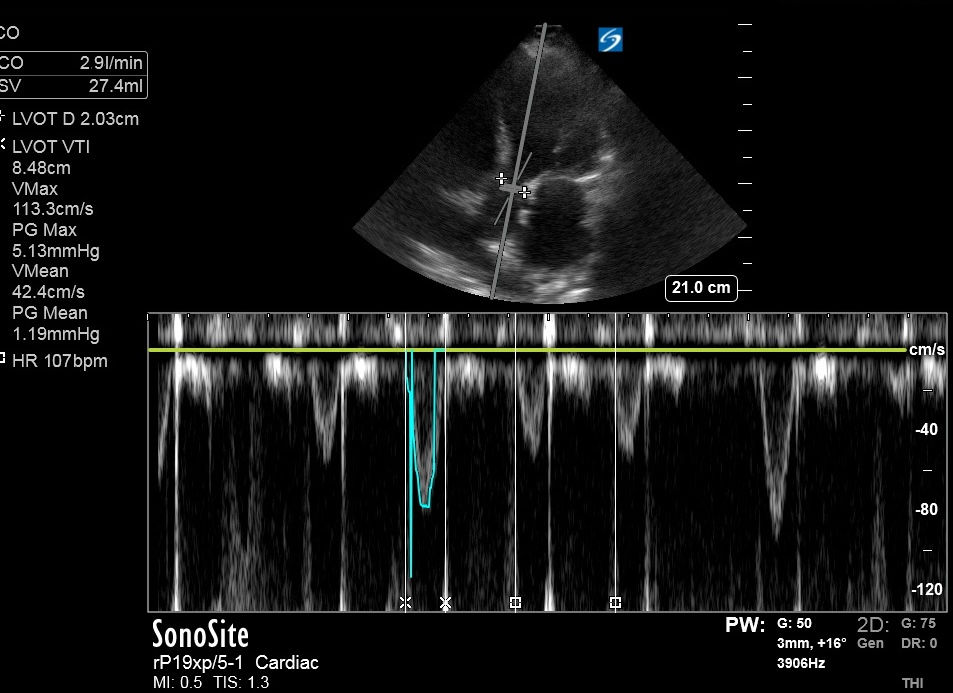Peer-to-peer Pocket Guide on Cardiac Ultrasound:
- Neev Patel

- May 29, 2023
- 4 min read
Updated: Jul 18, 2023
Here, in each view, the key structures, important abnormal signs, and their clinical significance are mentioned.
Key strutures:
These are the ones which are required to decrease interobserver variability and limit the findings to more or less, one specific plane. In the early learner stages, it is very easy to miss out on key structures only because of not knowing that they are key structures which should be present!
1. Parasternal Long Axis (PLAX) view:
- Key structures to be visualized: descending aorta, aortic valve, and mitral valve.
Clinical significance:
1. Gross systolic function assessment:
Mitral valves: observe the motion of the mitral valve leaflets during the cardiac cycle. The mitral valve should open fully during diastole and close properly during systole.
Restricted mitral valve motion, reduced leaflet excursion, or inadequate valve closure may suggest LV dysfunction, such as impaired contractility or mitral valve pathology.
LV cavity should also get smaller in size in systole.
Here, ballparking EF from LV wall motions and contrctility is often times very inaccurate. I have found mitral valve excursion to be an easier way of assessing gross systolic function, since it is hard to miss abnormal excursion, where valves are not approximating well to inter-ventricular septum.
2. Gross volume status assessment:
In a state of euvolemia, the RV should be approximately the same size as the aorta.
Clinical significance: Similar sizes of the RV and aorta suggest a balance in volume status, indicating normal fluid levels within the cardiovascular system.
3. Differentiating pleural effusion from pericardial effusion:
In the PLAX view, the descending aorta can be visualized posteriorly to help differentiate between pleural and pericardial effusion.
If the fluid collection seen in the PLAX view tracks superiorly to the descending aorta, it suggests a pericardial effusion. Conversely, if the fluid tracks below the descending aorta, it is pleural effusion.
4. Less commonly used for point of care assessments:
Aortic stenosis: Echogenic thickening and restricted opening of the aortic valve leaflets.
Mitral regurgitation: Color Doppler showing retrograde flow from the left ventricle to the left atrium during systole.
2. Parasternal Short Axis (PSAX) view:
- Key structures: left ventricle, right ventricle, mitral valve, and aortic valve.
Clinical significance:
1. Assessing RV strain
Inter ventricular septal flattening: Evidence of elevated right heart pressures, causing the septum to flatten. As a thumb rule, if flattening occurs in diastole, it is primarily RV volume overload and if in systole, then primary RV pressure overload.
2. RV dilation: Enlargement of the RV compared to the LV in the PSAX view can suggest right ventricular dysfunction or increased pressure in the pulmonary circulation.
RV dilation may indicate chronic conditions such as pulmonary hypertension, chronic lung disease, or right ventricular failure. It can help guide diagnostic evaluation and management decisions.
3. RV/LV ratio: Comparing the size of the RV to the LV can provide a quantitative assessment of the RV's relative size in relation to the LV.
An increased RV/LV ratio may indicate RV enlargement or hypertrophy. It can be suggestive of conditions such as pulmonary hypertension, right ventricular hypertrophy, or RV pressure overload.
3. Apical Four Chamber (A4C) view:
- Key structures: all four chambers of the heart, mitral valve, and tricuspid valve.
Clinical signs and significance:
1. McConnell's sign:
Paradoxical systolic apical motion with normal contraction of the mid and basal right ventricle, often seen in acute pulmonary embolism.
Clinical significance: McConnell's sign is a specific finding associated with acute pulmonary embolism, helping differentiate it from other causes of right ventricular dysfunction. Its presence can aid in the diagnosis and management of pulmonary embolism.
2. Right ventricular (RV) enlargement:
Increased size of the RV compared to the LV.
Clinical significance: RV enlargement can indicate underlying conditions such as pulmonary hypertension, chronic lung disease, or right ventricular dysfunction. Recognizing this sign aids in differentiating and assessing the severity of these conditions.
3. Left ventricular hypertrophy:
Increased thickness of the LV myocardium (>1.1 cm) on M-mode or 2D imaging.
Clinical significance: based on clinical correlation, suggests chronic uncontrolled hypertension.
4. Left ventricular dilation:
Enlargement of the LV chamber size, often accompanied by impaired LV contractility.
Clinical significance: LV dilation can be caused by various conditions such as heart failure, dilated cardiomyopathy, or valvular heart disease. Identification of LV dilation helps guide management decisions and treatment options.
5. Interventricular septal flattening:
It may appear flattened or displaced toward the left ventricle during systole.
Clinical significance: Interventricular septal flattening indicates elevated right heart pressures, often seen in conditions such as pulmonary hypertension or right ventricular dysfunction.
6. Interventricular septal paradoxical motion:
This refers to movement in the opposite direction to what is typically expected during the cardiac cycle.
Clinical significance: This abnormal motion of the IVS can be seen in conditions such as right bundle branch block, ventricular dyssynchrony, or left bundle branch block. It may indicate impaired ventricular function and can affect overall cardiac performance.
4. Subcostal view:
- Key structures: all four cardiac chambers, atrial and ventricular septa, inferior vena cava (IVC).
Findings similar to apical four chamber view will be seen. Note that, subcostal is the most sensitive for posterior pericardial effusion.
Right ventricular hypertrophy (RVH):
RV wall thickness >0.5 cm (5 mm) is considered indicative of RVH.
Clinical significance: RVH can be seen in conditions such as pulmonary hypertension or chronic lung disease. It reflects a chronic response to increased pressure load on the right ventricle.
Thank you for reading.
Author:
Neev Patel, MD




Comments